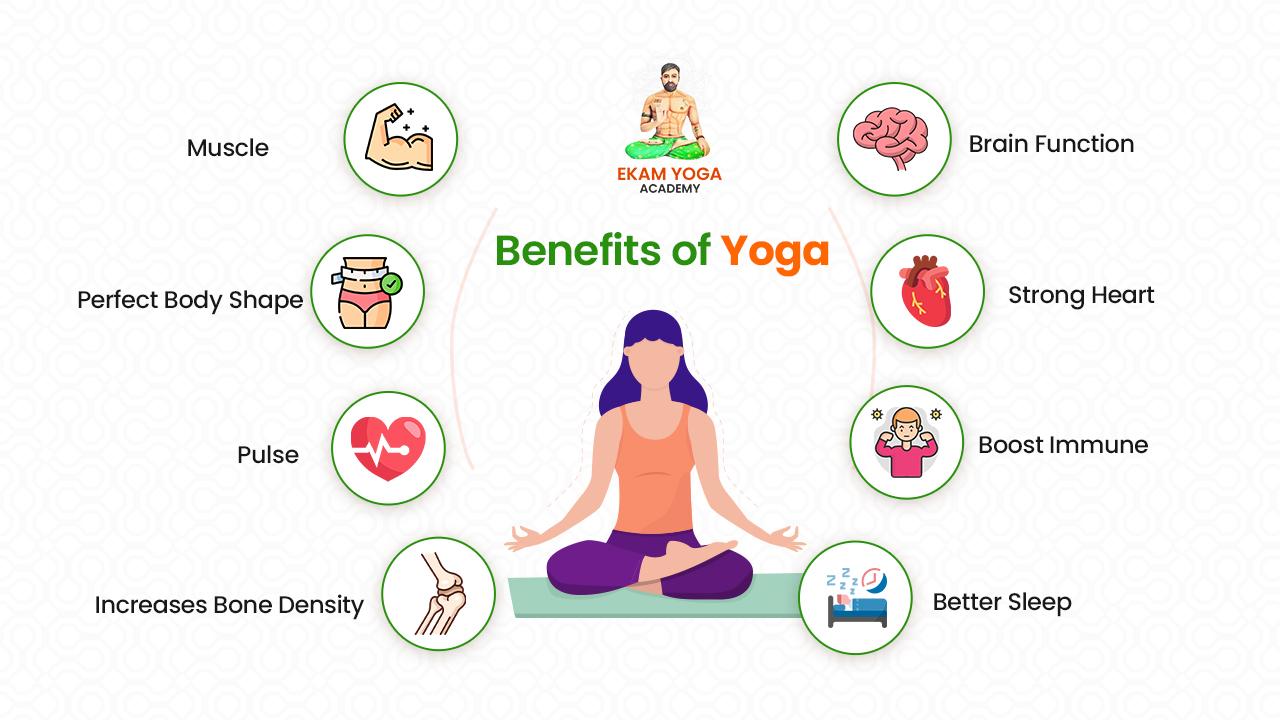In the ever-evolving landscape of fitness, where trends come and go like fleeting whispers, the age-old practice of yoga stands as a timeless beacon of tranquility and strength. Yet, as our lives become increasingly fast-paced, the question arises: Can the gentle flow of yoga truly substitute the heart-pounding intensity of traditional cardio workouts? This inquiry invites us to explore the very essence of what it means to be fit and healthy. As we unravel this conundrum, we find ourselves at the intersection of ancient wisdom and modern science, where the pursuit of well-being takes on new dimensions. Join us on this journey as we delve into the depths of yoga and cardio, examining their roles, benefits, and potential to coexist or compete in the realm of physical fitness.
Exploring the Heart-Healthy Benefits of Yoga
When we think of exercises that benefit the heart, our minds often jump to high-energy activities like running or cycling. Yet, yoga is steadily gaining recognition for its cardiovascular benefits. While it might not get your heart racing in the same way a HIIT session does, yoga’s gentle movements and deep breathing can significantly enhance heart health. Here’s how:
- Stress Reduction: Regular practice can lower stress hormones, which are known to contribute to heart disease. By promoting relaxation, yoga helps reduce blood pressure and inflammation.
- Improved Circulation: Many yoga poses enhance circulation, ensuring that oxygen-rich blood reaches every part of your body, thus supporting heart function.
- Enhanced Flexibility and Strength: Although yoga is low-impact, it builds strength and flexibility, both of which are crucial for overall cardiovascular health.
- Mindful Breathing: Pranayama, or yogic breathing exercises, can increase lung capacity and improve respiratory efficiency, leading to better oxygen delivery to the heart.
While yoga may not replace the calorie-burning potential of a cardio workout, its heart-healthy benefits are undeniable. By incorporating yoga into your routine, you can enjoy a holistic approach to cardiovascular wellness.

Understanding the Caloric Burn: Yoga vs. Traditional Cardio
When comparing the caloric expenditure of yoga to traditional cardio workouts, it’s essential to consider the intensity and type of each activity. Traditional cardio, such as running, cycling, or swimming, is often associated with higher caloric burn due to its aerobic nature and continuous movement. In contrast, yoga, with its variety of styles ranging from the gentle Hatha to the more vigorous Vinyasa or Power Yoga, offers a more diverse range of benefits that extend beyond mere calorie burning.
- Yoga:
- Focuses on flexibility, strength, and mental well-being.
- Calories burned vary significantly depending on the style and intensity.
- Encourages mindfulness and stress reduction.
- Traditional Cardio:
- Primarily aimed at increasing heart rate and improving cardiovascular health.
- Generally results in a higher caloric burn per session compared to yoga.
- Boosts endurance and aerobic capacity.
Ultimately, while yoga may not burn as many calories as a high-intensity cardio session, it offers a holistic approach to fitness that can complement cardio workouts, contributing to a balanced and sustainable fitness routine. Consider integrating both into your weekly schedule to reap the unique benefits each has to offer.
Flexibility and Endurance: A Comparative Analysis
When exploring the realms of flexibility and endurance, both yoga and traditional cardio workouts present unique benefits that cater to different aspects of physical fitness. Yoga, with its myriad of poses and breathing techniques, emphasizes stretching and strengthening muscles, thus enhancing flexibility. On the other hand, cardio exercises are designed to increase heart rate and improve cardiovascular health, which directly impacts endurance levels. But can one truly replace the other?
- Flexibility Focus: Yoga practitioners often find increased range of motion, reduced muscle tension, and improved posture as significant benefits.
- Endurance Emphasis: Cardio enthusiasts often experience enhanced stamina, weight management, and a strengthened heart.
While yoga may not mimic the high-intensity nature of cardio workouts, it offers a form of endurance through prolonged poses and controlled breathing. Conversely, the repetitive movements in cardio may not provide the deep stretch that yoga offers. Ultimately, the choice between yoga and cardio depends on individual fitness goals and preferences.

Personalizing Your Fitness Routine: Integrating Yoga and Cardio
Crafting a fitness routine that resonates with your personal preferences and goals can often feel like a daunting task. Yet, blending the calming, meditative qualities of yoga with the invigorating pulse of cardio can yield a uniquely balanced approach to wellness. While traditional cardio workouts focus on elevating the heart rate and building endurance, yoga offers a different set of benefits that can complement these goals. Through the integration of both practices, you can create a routine that nurtures both your body and mind.
- Enhanced Flexibility and Strength: Yoga’s various poses and stretches can significantly enhance your flexibility and muscular strength, which in turn can improve your performance in cardio activities.
- Mindful Breathing: The emphasis on breath control in yoga can lead to better breathing efficiency during cardio sessions, potentially boosting your stamina.
- Stress Reduction: While cardio is often seen as a way to blow off steam, yoga provides a structured method for stress reduction, helping to balance your overall mental health.
By personalizing your fitness routine to include both yoga and cardio, you not only diversify your workouts but also create a holistic approach to health. This fusion allows you to enjoy the benefits of improved cardiovascular health while simultaneously cultivating a deeper sense of inner peace and flexibility.
In Summary
In the ever-evolving landscape of fitness, the question of whether yoga can stand toe-to-toe with traditional cardio workouts continues to intrigue and inspire. As we’ve explored, the answer isn’t as clear-cut as one might hope, weaving through personal goals, physical needs, and the diverse tapestry of yoga practices themselves. While yoga may not always replicate the high-intensity burn of a cardio session, it offers its own unique blend of benefits that extend beyond the physical, touching the realms of mental clarity and inner peace.
Ultimately, the path you choose is yours to craft. Whether you’re drawn to the rhythmic pulse of a heart-pounding run or the serene flow of a sun salutation, remember that the essence of any workout lies in its ability to resonate with you, body and soul. Embrace the journey, explore the possibilities, and let your fitness regimen reflect not just your aspirations, but your authentic self. As you unroll your mat or lace up your sneakers, know that the pursuit of wellness is not a destination but a lifelong voyage, where every breath and every step is a testament to your commitment to health and harmony.

